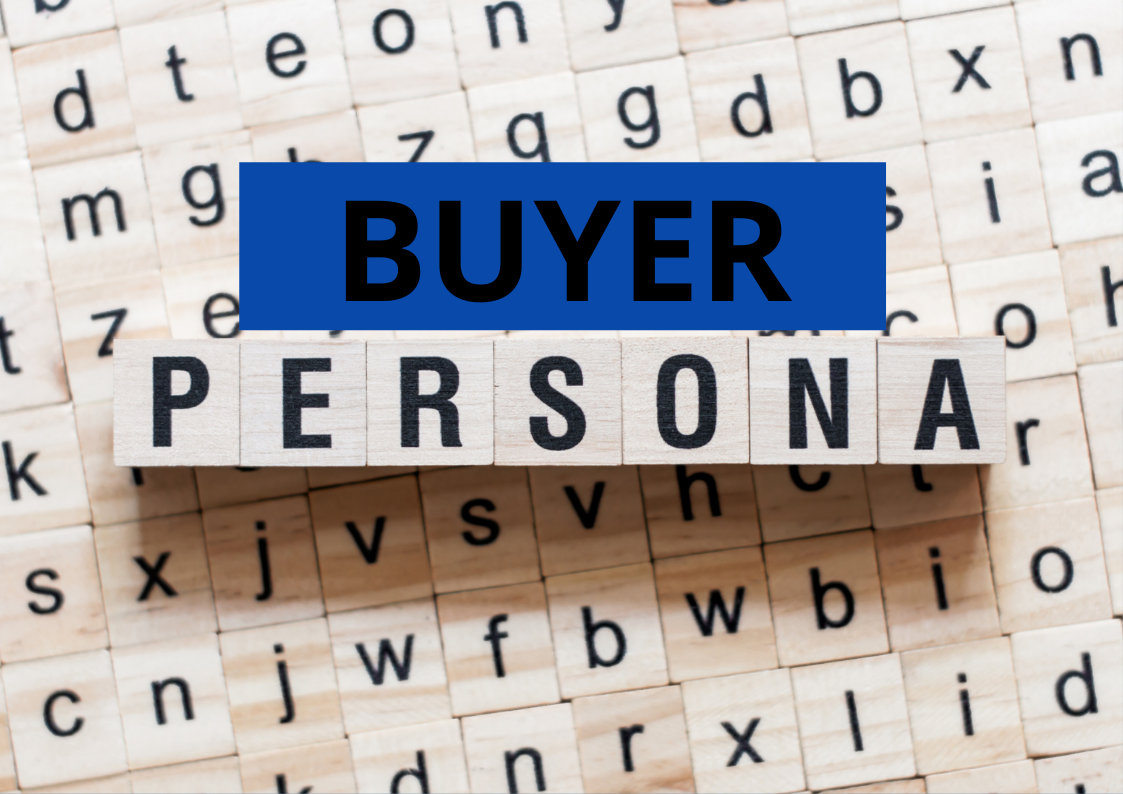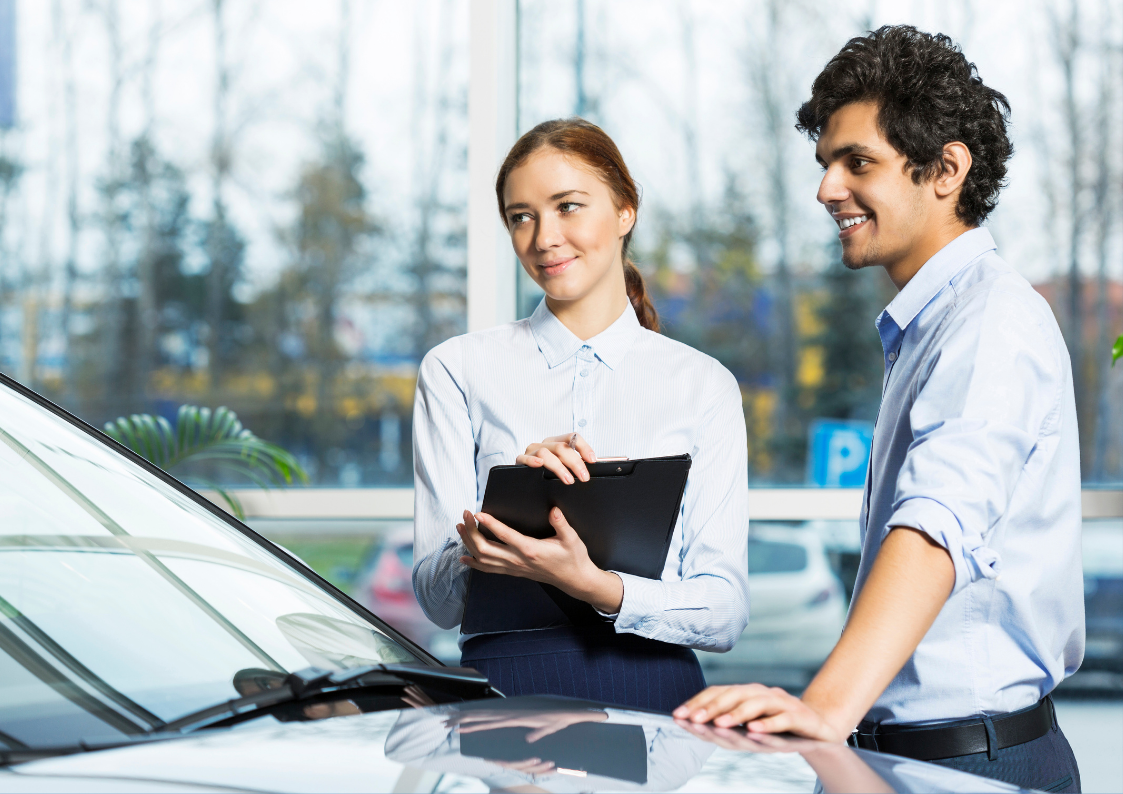What is a Buyer Persona?
A buyer persona is a model customer. This fictional person embodies the characteristics of your best potential customers. To understand their goals, pain points and buying patterns, you will give them a name, demographics, interests and behavioural traits. You might also want to give them a face using stock photography.
The purpose of creating a buyer persona is to craft marketing messages for the person. Different groups of people might buy your products for different reasons and will require more than one buyer persona.
How your business should use Buyer Personas
Once you have created your personas, it’s important to keep them up-to-date. As your business changes and grows, so will the needs of your customers. So make sure to revisit your personas regularly and update them as needed.
Once you have a good understanding of your ideal customer, it’s time to move on to the next step: customer insights. This involves studying your current customers and understanding their behaviours, needs, and motivations. You can use surveys, interviews, focus groups, and social media listening tools for this as well.
With both market research and customer insights collected, you can begin tailoring your content, messaging, product development, and services to match the needs of your buyer persona. Doing so will make it easier to create marketing campaigns that resonate with your audience and improve ROI from all marketing efforts. So don’t wait! Begin following these steps today!
How to use the Hubspot persona template to find your Buyer’s Personas
To successfully grow a user base, SaaS companies need specific buyer personas. The templates in this passage provide detailed information about how the personas for SaaS buyers differ from those of other types of companies and what messaging is most effective with each type.
These templates are free and include a three-part series on how to create buyer personas and profiles of various product areas that can be used for marketing purposes.
There are many free buyer persona templates for sale online, and they come in a variety of industries such as finance, manufacturing, SaaS, senior care, education and more. In addition, the topics covered by these templates include ABM, marketing strategy and reporting & attribution, among others. So whatever your needs may be–there’s a template out there for you!
Different types of Buyer Personas
There is no setlist of universally-recognized buyer personas nor a standard for the number of personas you need. Businesses should consider unique buyer personas tailored to their needs and audience because they are different from every other business.
Creating buyer’s personas can be challenging – we recommend using HubSpot’s Make My Persona generator. The number of buyer personas your business needs is dependent on the customers you’re serving and who they are as individuals.
When creating your buyer personas, it’s important to keep in mind what type of persona you’re creating and why you’re creating it. Additionally, ask yourself who else might find this persona useful – for example, if you’re targeting different markets or audiences with different needs. Here are a few common types of buyer personas:
1. The Innovator
This persona is always on the lookout for the latest and greatest products. They’re excited by new technology and love being the first to try something new.
2. The Early Adopter
Like innovators, early adopters are always looking for new technology, but they’re more likely to wait until a product has been proven before buying it.
3. The Pragmatist
This persona wants what’s best for their business and isn’t afraid to make tough decisions. They care about results and figuring out what works best for their company.
4. The Skeptic
Skeptics are often reluctant to change and can be resistant to new ideas, even if they may be good ones. They need a lot of convincing before they’ll consider making a purchase or implementing a new process in their company.
5. The Loyal Customer
Loyal customers are valuable assets for any business! They’re happy with the status quo and don’t like changes, so businesses should take care not to upset them unnecessarily.
6. The Dissatisfied Customer
Dissatisfied customers are a business’s worst nightmare. They’re vocal about their displeasure and can damage a company’s reputation with just a few angry tweets.
Which type of persona best describes your target audience?
How to create a Buyer Persona?
When creating a buyer persona, it’s important to gather information as you work through these steps.
Creating a buyer persona can be extremely valuable to your business. It allows you to understand your target market better, and it helps you create content and products that appeal to them. To create a buyer persona, you’ll need to gather information as you work through these steps:
1. Get free buyer persona template in HubSpot
This will help you get started gathering the information you need.
2. Gather information
As you work through the template, be sure to gather information about your target market’s demographics, goals and aspirations, story, day in the life, major challenges, and how they make decisions.
3. In-depth buyer personas should include a few key elements
Name, job title and alliteration are a few key elements that should be included in in-depth buyer personas. This will help make them more relatable and memorable for your target market.
For example, if you’re a company that sells website design services, your personas may be “Buyer persona profile: Sandy Smith is an energetic 20-something who loves spending her weekends outdoors.”
4. Demographics
Age, household income, budget, location, and education are all important demographic information to include in your buyer persona.
5. Create a Buyer Persona’s story
What is the buyer persona’s story?
This will help you understand their motivations and goals.
6. Buyer persona profile example
“Sandy loves spending her weekends outdoors, hiking, biking, and camping with her friends. She’s been looking for a new website design that can help her showcase her photos and adventures online.”
7. Day in the life
300 words is a good length for a day in life description. It should give enough detail for you to understand what a typical day looks like for your target market.
8. Major challenges
What are the major challenges your target market faces?
9. How they make decisions
Understanding how your target market makes decisions is key to creating content and products that appeal to them.
10. Common objections
What are some common objections your target market may have about purchasing your product or service?
11. Create a face for each description
As you’re writing your buyer personas, it’s helpful to picture them as real people with faces and personalities. This will help you create content and products that feel relatable to them
Creating a buyer persona can seem daunting, but it’s not as difficult as you might think. You can start by gathering information as you work through these steps.
Once you have your basic information, it’s time to get creative. Try to think about the buyer persona in terms of their goals and aspirations. What are they looking for in a product or service? What are their major challenges? How do they make decisions? What common objections do they have?
Why exactly are Buyer Personas so important to your business?
There are a number of reasons why it’s important for your business to have buyer personas. First and foremost, they help you tailor content and messaging to meet the specific needs, behaviours, and concerns of the members of your target audience. This is especially useful for businesses that sell products or services related to caregiving – by understanding who their buyers are and what motivates them, companies in this industry can create much more effective marketing campaigns that resonate with potential customers.
HubSpot offers templates that make it easy to create buyer personas at any level, so there’s no need to feel overwhelmed if you’re just starting out. And even if you already have some buyer personas in place, it’s always a good idea to revisit them from time to time and make sure they’re still accurate. After all, customer behaviour can change over time, so what might have been true a year ago may not be true anymore.
The bottom line? Buyer personas are an important part of your business because they give you a better understanding of who your best customers are and what makes them tick. Armed with this information, you’ll be in a much better position to market your products or services effectively!
What is Persona Mapping?
Mapping personas is the process of creating a fictional character that represents your target audience. By creating a persona, you can better understand your customers and make educated business decisions. This includes understanding your prospects’ objectives, motivations, preferences, and challenges.
When mapping personas, it’s important to be as detailed as possible to have a clear picture of your target market. You may want to consider things like age, gender, occupation, income level, and lifestyle. The more information you have about your customers, the better equipped you’ll be to serve them?
How to perform persona mapping to create a user persona
In order to create a user persona, it is important to first understand who your customer is. This means getting beyond the surface and digging into details so you understand how to sell your product or service best as well as create content that appeals to this specific customer base. The goal of persona mapping is to increase conversion rates and to do this, you need to know the difference between goals and objectives.
Your goal may be something like “increase sales by 20%,” but your objective might be something like “increase website traffic by 50%.” If you want to reach your goal, you’ll need to achieve your objectives first. And for you to understand your target audience’s needs and goals, it is essential that you read through customer reviews, listen to what customers say about your company on social media, and even look at job postings. Customer job posts are an especially important source of information when it comes to understanding your target audience’s needs and goals.
What benefits a buyer persona brings to the business?
A buyer persona is a representation of your ideal customer. It’s a way to personify the people you’re trying to reach with your products and services. When you have a deep understanding of who they are, what they want, and what keeps them up at night, you can create content and messages that speak directly to them.
Buyer personas have an impact on the business beyond commercial goals. They increase efficiency and accessibility in Marketing strategies, which benefits the company. Personas help us understand how our customers interact with our content, making it possible to target them more effectively. Additionally, well-crafted personas make it easier for other departments within the company to understand our customers’ needs and wants. This leads to better alignment across teams and increased efficiency all around.
What is a Target Audience?
A target audience is a demographic target that a company or organisation chooses to aim their marketing campaigns and efforts towards. A well-defined target audience is essential for any effective marketing strategy. Demographic information (e.g., age, sex, income, education) about the people you want to reach informs your decisions about whom to market to and how.
How does a Persona affect your content production?
For you to create content that is relevant and useful for your customers, it’s crucial to know who they are. That way you can understand what makes them tick so you can target their needs and wants. And when you know this, it’s easier to make content that will resonate with your target audience and become a trusted source of information they turn to time and again.
How Buyer Persona helps you in Social Media Content?
When creating social media content, it’s a good idea to know who your target audience is and what they’re looking for. This allows you to put yourself in their shoes, which will make the content more relatable. For example, if your target audience is college students looking for internships, you might want to create a post about how to find an internship.
What is the relationship between the Buyer Persona and the Buyer’s Journey?
The buyer’s journey is the process of acquiring a customer. The buyer persona is a representation of who that customer is. So, there is a relationship between the two. If you have a strong buyer persona, then mapping out effective ways to influence their buyer’s journey is possible.
However, it’s not as simple as just creating content and hoping the lead will find it. A strategy based on personas needs to be closely monitored to ensure the lead has access to the right content at the right time. And that’s where a good CRM comes in handy. It can help facilitate communication among all members of the team to improve quality and speed up the process.
Take your Buyer Personas to the next level
When creating your buyer personas, it’s important to go beyond the basics and focus on the nuances of your target audience. By doing this, you’ll be able to create more effective B2B lead generation campaigns.
Personas can help you understand your buyers on a deeper level, which in turn will allow you to create content that is more relevant and appealing to them. You can also use persona data to personalize your marketing efforts, making them more targeted and thus more successful.
It’s also important to consider the lifecycle stage of your buyers when creating personas. This will help you create content that is tailored specifically for each stage of the sales cycle. Additionally, segmenting buyers by their lifecycle stage allows you to better understand how they interact with your company.
Finally, negative personas can be helpful in B2B lead generation campaigns. These are individuals who are not likely to buy from you, so targeting them with content or offers is a wasted effort. Negative personas can help reduce costs associated with lead generation by allowing you to focus only on qualified leads.
Talk to HubSpot Experts
The HubSpot Persona Template Generator is all about ensuring that the appropriate message is delivered to the right person at the right time. And it provides you with all the information you need to ensure that your marketing efforts are achieving their goals!
HubSpot is a powerful platform with many tools and features to make your marketing process simpler and more productive. Those features are useful, but figuring out what you’re utilising and what you’re not might be difficult, especially if you’re new to HubSpot.
If you’d like one-on-one support getting your HubSpot buyer personas (or any other HubSpot tool!) up and running, we recommend talking to Ubique Digital Solutions. UDS is a Diamond HubSpot Partner that caters for anything you need regarding HubSpot. Contact us now and speak to our experts.











